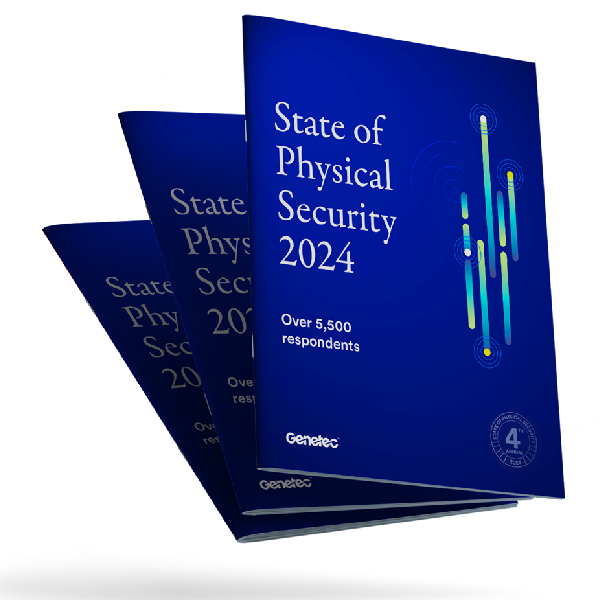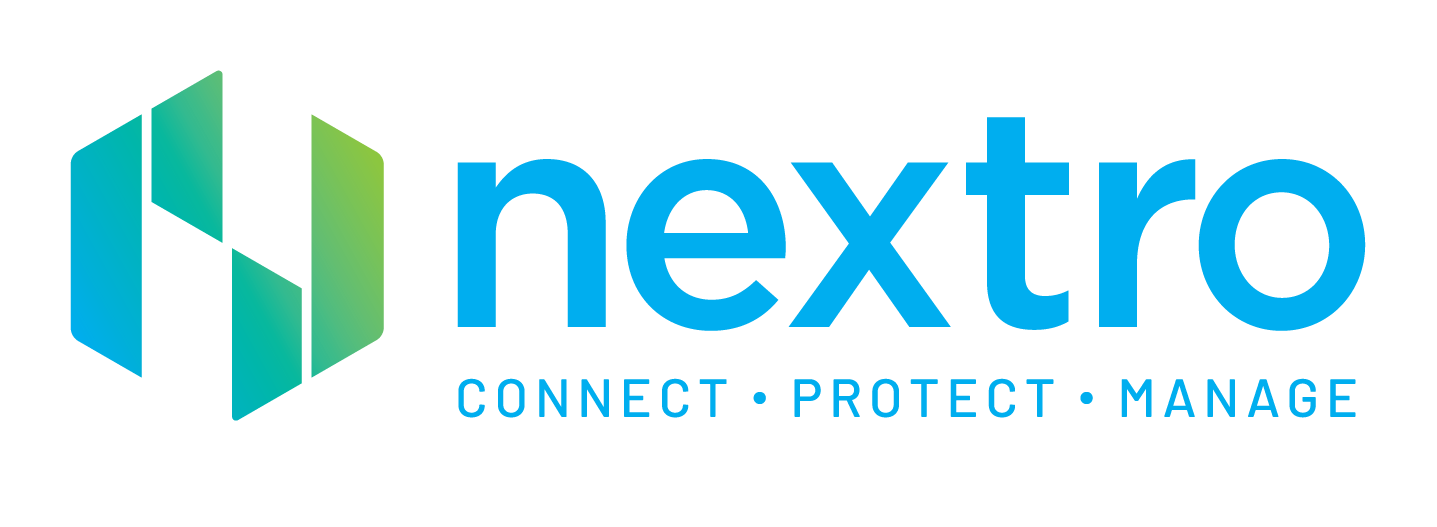Security Beyond Boundaries: Nextro’s Summary of Top Physical Security Trends for 2024 – from the Genetec Report
Despite the lingering impact of pandemic-related disruptions, New Zealand businesses are pushing forward, reinforcing their risk management plans amidst labour shortages, supply chain complexities, and escalating physical and cybersecurity threats.
At Nextro, we recognise physical security’s pivotal role in empowering businesses to achieve their goals. As we advance into 2024, we foresee the industry focusing on growth, emphasising agility, data optimisation, and resource efficiency.
This blog post covers the top physical security trends to watch in 2024, as highlighted by Genetec’s State of Physical Security Report 2024. These include the integration of IT and physical security teams, physical security data democratisation, IIoT growth and data-optimised solutions, and the implementation of cybersecurity tools to enhance automation and risk detection.

Read more to learn about these key trends and how they can help your business stay secure and increase operational efficiency.
1. IT and physical security teams will join forces
Physical security’s convergence with IT is accelerating. And it isn’t limited to technology anymore.
Organisations will look to optimise collaboration between IT and physical security teams in the coming year. Bridging these two valuable skill sets will result in more effective risk mitigation and data optimisation across the organisation. And though there’s no one-size-fits-all approach, most will consider the following strategies:
- Physical security leaders will expand their departments with IT expertise
- Security Operations (SecOps) will broaden their function to address physical security risks and capitalise on data coming from both groups.
- IT will bring physical security within their group and begin overseeing physical security mandates.
As this human-centred convergence grows, so will the demand for unified, cloud-connected physical security solutions. This will give teams a comprehensive view of systems and evolving risks while helping them extract more value from data.
2. The democratisation of physical security data will surge
The democratisation of physical security data is well underway. More employees need to engage with physical security technologies and data than ever before.
Genetec’s Physical Security Report 2024 shows that almost 40% of organisations are also struggling with physical security labour shortages. Gatekeeping access to specific tasks or information only compounds the strain on resources.
As employee roles evolve in this digital era, organisations will seek more collaborative physical security technologies. They’ll want easy-to-use solutions that can support secure, limited-use applications for people outside of the security department.
What could this look like? Crime-scene witnesses securely share video from their phones to a centralised evidence repository, or team leaders oversee access requests relevant to their department.
For many organisations, this will lead to greater workforce augmentation across the enterprise. It will also help them expand the value of security investments to serve broader objectives.
3. Access control modernisation will top tech investments
Modernising access control will remain a top priority in 2024. To ease upgrade complexities, many organisations will shift to a hybrid-cloud model and deploy cloud-ready access control solutions. This will deliver continuous innovation and cybersecurity updates that reinforce security from doors to networks.
We’ll also see greater demand for open-access control solutions. More than ever, organisations want the freedom to add and connect the best technologies. In 2024, this will include everything from building management systems and life and safety solutions to human resource management software and mobile credentials, to name a few.
Unifying access control with these various technologies can boost operational efficiencies and sustainability initiatives. They also allow employers to enhance the cardholder experience, one where everything feels more fluid and convenient.
Many will also reach a breaking point in managing separate video and access control systems. Striving for more efficiencies, leaders will take steps towards system unification. This will simplify system monitoring and maintenance tasks, leading to higher output and cost savings across the enterprise.
4. Organisations will seek to maximise hybrid-cloud investment
The physical security industry will see a large increase in hybrid-cloud adoption in 2024. Recent research found that 44% of organisations already have over a quarter of their physical security deployment in a cloud or hybrid-cloud environment.
As cloud adoption rises, there’s a growing interest in new plug-and-play, cloud-ready appliances. They not only streamline access to cloud services but also enhance computing power at the edge.
We’ll also see a larger focus on cloud data usage and associated costs. Those who are further along in their hybrid-cloud journey are seeking ways to optimise cloud spend. Many will lean on channel partners to explore use cases beyond security to maximise hybrid-cloud investments.
5. Cities will become focused on building public trust
In recent years, police departments have been struggling to hire and keep officers. To offset this problem, many cities are investing in new crime-fighting technologies. Everything from vehicle investigation systems and situational awareness platforms to drones and body-wearable devices helps boost efficiencies across public safety departments.
Yet, as the use of technology expands across cities, so do public privacy concerns. In 2024, we’ll see a growing commitment from cities to build more public trust and strengthen privacy efforts. The following core strategies will be most helpful:
- Choosing solutions built with Privacy by Design to gain more control over the data they collect, handle, and share.
- Partnering with trusted technology vendors to ensure all lines of defence are optimised and systems are hardened.
- Being more transparent about the steps to secure information and sharing metrics on how new tech investments enhance community safety.
- Creating partnership programs that allow citizens to report incidents, offer feedback, and engage in community policing efforts.
6. IIoT growth and data-optimised solutions will boom
The number of physical security devices and other industrial Internet of Things (IIoT) sensors coming into the market is accelerating. And across industries, organisations can’t get enough. IT and security experts want to expand the types of data within their security deployment. Beyond that, they’re looking to extract data from the systems holding it and build data lakes that serve future objectives.
At this critical moment, those who opt for an API-centric, open architecture, along with a unified physical security platform, will stand to gain the most over time. This will give them the flexibility to combine and simultaneously analyse various sources of data on their own terms. Ultimately, this can help inform new data-driven strategies and maximise returns across all tech investments.
During this data influx, many organisations will also look for ways to empower their operators and digitise current workflows. As a result, demand for physical security solutions with embedded analytics, automation tools, and visual dashboards will grow.
7. Organisations will favour government-approved solutions
According to IBM, the average cost of a data breach in 2023 was $4.45 million USD. And only one-third of companies were able to identify the breach through their own security teams.
Moving into 2024, many organisations will use government directives and accredited certifications to guide technology decisions and scrutinise their supply chain. This will increase demand for government-approved, highly compliant physical security solutions.
Today, the most stringent data protection requirements apply to government agencies and essential services. However, other organisations are paying close attention.
By adopting similar strategies and solutions, they get access to the most advanced tools that help identify and contain threats faster. They can also prove trustworthiness by showing partners and customers they take cybersecurity seriously. The benefits are two-fold: stronger resilience and organisational continuity.
8. Implementing cyber defences is an ongoing focus
In 2023, 31% of end users indicated that their organisation was targeted by cybercriminals. And despite organisations improving cybersecurity practices, the level of concern continues to rise.
In 2024, more organisations will implement cybersecurity tools that enhance automation and proactive risk detection. These could include monitoring cybersecurity dashboards to identify real-time vulnerabilities or using decision-support solutions to streamline and track maintenance tasks.
The physical security industry has made strides in strengthening cyber resilience, but hardening physical security systems is a baseline necessity and an ever-evolving speciality.”
At Nextro, our vision extends beyond physical security; it encompasses a future where businesses thrive, unburdened by uncertainties.
We deploy best-of-breed technologies in our security solutions to fortify an organisation’s defences and safeguard its assets and people. We also help organisations integrate physical and cybersecurity into their business strategies and develop efficient detect-protect-and-respond action plans.
If you want to discuss how Nextro can help address any of your physical security or cybersecurity needs, please get in touch with us today.

To download the full State of Physical Security Report 2024 contact us here:
